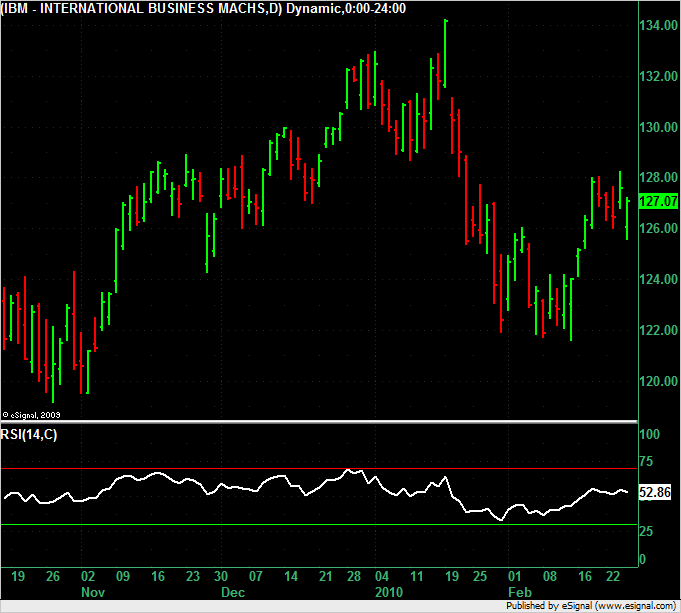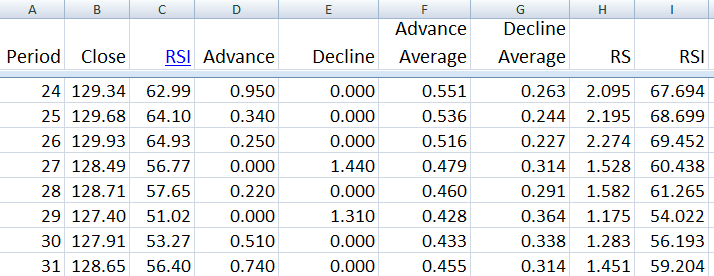Relative Strength Index RSI
Search Dictionary
Definition of 'Relative Strength Index RSI'
The RSI is a technical indicator based on the relationship of the average of recent gains to recent losses. It attempts to determine overbought and oversold conditions of the stock or future that is being tracked.
Because this is an oscillator style indicator the value always "oscillates" between two extremes which are 0 and 100. Values in the upper band, between 70 and 100 indicate an overbought situation. Values in the lower band, between 30 and 0 represent oversold values.
The formula for the RSI is:
RSI = 100 - (100 / (1 + RS))
RS = Average Gain / Average Loss
The default and most common number of periods to average for the RSI is 14.
In the above chart for IBM the RSI remains mostly between the lower 30 band marked with a green horizontal line and the upper 70 band marked with a red line.
Above is an image of the spreadsheet that you can download below to play around with and try different values of RSI.
Because this is an oscillator style indicator the value always "oscillates" between two extremes which are 0 and 100. Values in the upper band, between 70 and 100 indicate an overbought situation. Values in the lower band, between 30 and 0 represent oversold values.
The formula for the RSI is:
RSI = 100 - (100 / (1 + RS))
RS = Average Gain / Average Loss
The default and most common number of periods to average for the RSI is 14.
In the above chart for IBM the RSI remains mostly between the lower 30 band marked with a green horizontal line and the upper 70 band marked with a red line.
Above is an image of the spreadsheet that you can download below to play around with and try different values of RSI.
Click link to access uploaded file:
RSI.xlsx
RSI.xlsx
Do you have a trading or investing definition for our dictionary? Click the Create Definition link to add your own definition. You will earn 150 bonus reputation points for each definition that is accepted.
Is this definition wrong? Let us know by posting to the forum and we will correct it.
Emini Day Trading /
Daily Notes /
Forecast /
Economic Events /
Search /
Terms and Conditions /
Disclaimer /
Books /
Online Books /
Site Map /
Contact /
Privacy Policy /
Links /
About /
Day Trading Forum /
Investment Calculators /
Pivot Point Calculator /
Market Profile Generator /
Fibonacci Calculator /
Mailing List /
Advertise Here /
Articles /
Financial Terms /
Brokers /
Software /
Holidays /
Stock Split Calendar /
Mortgage Calculator /
Donate
Copyright © 2004-2023, MyPivots. All rights reserved.
Copyright © 2004-2023, MyPivots. All rights reserved.

